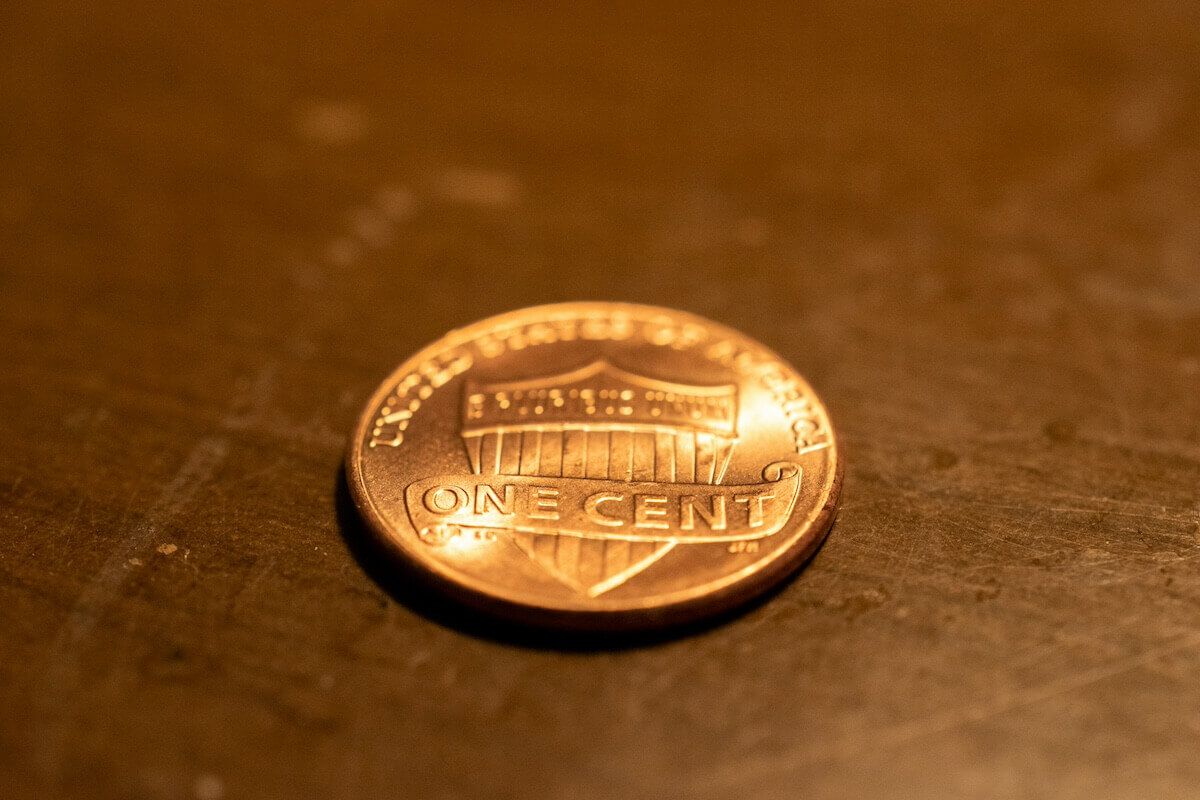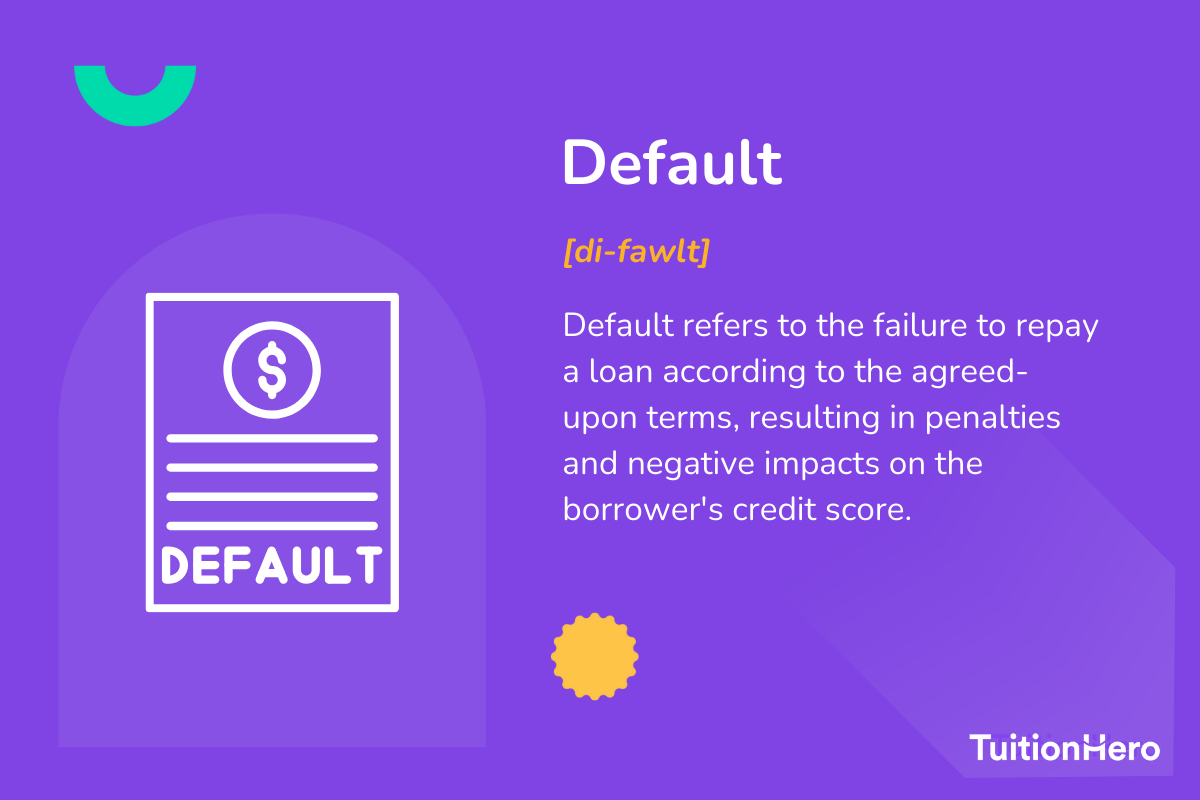Advertiser Disclosure
Last update: November 17, 2024
5 minutes read
Student Loan Default: What is it and How to Identify and Navigate Your Recovery Options
Struggling with student loan default? Find out what it means, its effects, and how to recover effectively from defaulting on your student loans.

By Brian Flaherty, B.A. Economics
Edited by Rachel Lauren, B.A. in Business and Political Economy
Learn more about our editorial standards



By Brian Flaherty, B.A. Economics
Edited by Rachel Lauren, B.A. in Business and Political Economy
Learn more about our editorial standards
Understanding student loans can be confusing. But what's even more confusing is student loan default. People often get worked up when talking about it, so knowing the difference between delinquency and default is critical. In this post, we'll dive deep into what student loan default is and how to recover from it.

Key takeaways
- Defaulting on your student loans means you’ve fallen behind on your loan payments significantly
- Rehabilitation, consolidation, and Fresh Start are viable recovery options
- Avoiding default is essential for maintaining financial stability
What is default?
A student loan default happens when a borrower has fallen significantly behind on their student loan payments. Specifically, federal student loans are considered in default after approximately nine months (270 days) of non-payment, whereas private student loans might default sooner, depending on the details of the loan terms.

How to recover
Recovering from student loan default is crucial to regaining financial stability. It directly affects your credit score, ability to take out future loans, and even your overall financial well-being.
Here's how you can start the recovery process:
- Repayment: Paying the amount owed in full, though it might not be possible for everyone.
- Loan rehabilitation: Making nine monthly payments within a 10-month period.
- Consolidation: Combining loans into a single loan with a fixed interest rate based on the average of the interest rates of the loans being consolidated.
Overview of the Fresh Start Program
In April 2022, the U.S. Department of Education launched an initiative known as the Fresh Start program, designed to help borrowers in default. Targeting approximately 7.5 million people, the program aims to provide an opportunity for these borrowers to rehabilitate their loans, transitioning from default to good standing.
Fresh Start offers several benefits that are automatically available, including reinstating defaulted borrowers' eligibility for federal student aid and other government loans. Nonetheless, to keep these benefits after the program concludes, borrowers must actively enroll in Fresh Start. Failure to do so will result in the forfeiture of these advantages.
Consequences of student loan default
Defaulting on your student loans comes with big consequences that can affect many aspects of your life. It's crucial to understand these effects as you make your way towards recovery.
Your loan holder can take your money
The first consequence of a student loan default is that your loan holder might be authorized to seize parts of your income, whether through wage garnishment or by seizing federal benefits, including tax refunds. This method of recovering owed money bypasses the need for court approval, directly affecting your financial stability.
Credit score impact
A defaulted student loan is a serious negative mark on your credit report. This damage affects your ability to take out future loans, buy a house, or sometimes even secure employment. Recovering from this needs strategic actions, like rehabilitation or loan consolidation, which we've covered before.
Increased financial burden
The total amount you owe can greatly increase because of the accumulation of late fees, more interest, or legal costs if your lender takes legal action. Remember, beyond the principal amount, these added fees can increase the total debt, making it even harder to climb out of default.
Compare private student loans now
TuitionHero simplifies your student loan decision, with multiple top loans side-by-side.
Compare Rates
What doesn't happen when you default
Understanding what doesn’t happen can also provide clarity and reduce anxiety for borrowers facing or in default.
You won't be arrested
It's a common misconception that you can be arrested for not paying your student loans. While you can face legal actions, and those might involve court, being arrested for simply defaulting on a student loan isn’t one of the possible outcomes.
Professional license impact
In some cases, defaulting on your student loan can lead to the suspension of your professional license. While this might not happen immediately, it's a potential long-term consequence that could severely affect your career and ability to earn income.
Now, let's look at some numbers to see how many students couldn't pay back their loans and how many managed to fix the situation. Before we get into the specific numbers, it's important to understand that each piece of information is crucial for figuring out how student loans work.
The table below shows the number of students who were able to fix their loan situation within five years, and it points out a significant pattern in how the recovery process works.
Year | Approximate borrower count |
|---|---|
2017 | 347,000 |
2018 | 365,000 |
2019 | 352,000 |
2020 | 436,000 |
2021 | 166,000 |
The decline in 2021 could be due to the government's pause on federal student loan payments and collection activities during the COVID-19 pandemic, providing a temporary reprieve for borrowers.
Dos and don'ts of recovering from student loan default
Recovering from student loan default is a complex process that requires careful navigation. Here's a concise guide to help you understand the best practices and common pitfalls to avoid during this time.
Dos
Enroll in a rehabilitation program.
Consider loan consolidation.
Check if you're eligible for the Fresh Start program.
Seek professional advice if needed.
Create a budget to manage your payments.
Don'ts
Ignore communication from your loan servicer.
Assume default will go away on its own.
Accumulate more debt trying to pay off the default.
Avoid pulling your credit report.
Skip payments once you start a recovery plan.

Why trust TuitionHero
At TuitionHero, we help with all aspects of student finances, from loans to financial advice. Our platform offers guidance on private loans, refinancing, scholarships, FAFSA, and student-friendly credit cards. Our resources simplify recovering from student loan issues for you and your family. Use our educational resources and marketplace tools to achieve financial well-being.
Frequently asked questions (FAQ)
The first step should be to contact your loan servicer to discuss your options, which could include loan rehabilitation, consolidation, or enrollment in the Fresh Start program for eligible federal loans. Our comprehensive guide on navigating student loans can offer more insights and actionable steps to take control of your situation.
While in default, your eligibility for federal student aid is restricted, including new student loans. Successfully rehabilitating your loan or taking advantage of the Fresh Start program could restore your eligibility. TuitionHero’s resources on refinancing student loans can also provide crucial guidance for people looking to understand their refinancing options.
Consolidation can be an effective way to recover from default quickly, especially if you need access to financial aid or other benefits. However, it's not suitable for everyone, as it doesn’t remove the default from your credit report and may lead to a higher total interest cost over time.
Consider your long-term financial goals and possibly consult with a financial advisor to decide if this is the right step for you. Our insights on managing student loans might help you weigh the pros and cons.
A student loan default can significantly lower your credit score, making it harder to qualify for credit cards, mortgages, or other loans. Even after resolving the default, the history of late payments leading up to the default can still affect your credit score. Exploring our resources on student-friendly credit card offers can be an initial step towards rebuilding your credit.
Final thoughts
Recovering from student loan default can be tough, but it's possible with the right steps and help. You can consider options like loan rehabilitation, consolidation, or the Fresh Start program to get back on track financially.
At TuitionHero, we're here to help you understand where you stand and guide you through the process of recovering from default. Acting quickly and making informed decisions is key to minimizing the impact on your financial future.
Source
Author

Brian Flaherty
Brian is a graduate of the University of Virginia where he earned a B.A. in Economics. After graduation, Brian spent four years working at a wealth management firm advising high-net-worth investors and institutions. During his time there, he passed the rigorous Series 65 exam and rose to a high-level strategy position.
Editor

Rachel Lauren
Rachel Lauren is the co-founder and COO of Debbie, a tech startup that offers an app to help people pay off their credit card debt for good through rewards and behavioral psychology. She was previously a venture capital investor at BDMI, as well as an equity research analyst at Credit Suisse.
At TuitionHero, we're not just passionate about our work - we take immense pride in it. Our dedicated team of writers diligently follows strict editorial standards, ensuring that every piece of content we publish is accurate, current, and highly valuable. We don't just strive for quality; we aim for excellence.
Related posts
While you're at it, here are some other college finance-related blog posts you might be interested in.
Shop and compare student financing options - 100% free!

Always free, always fast
TuitionHero is 100% free to use. Here, you can instantly view and compare multiple top lenders side-by-side.

Won’t affect credit score
Don’t worry – checking your rates with TuitionHero never impacts your credit score!

Safe and secure
We take your information's security seriously. We apply industry best practices to ensure your data is safe.
Finished scrolling? Start saving & find your private student loan rate today





